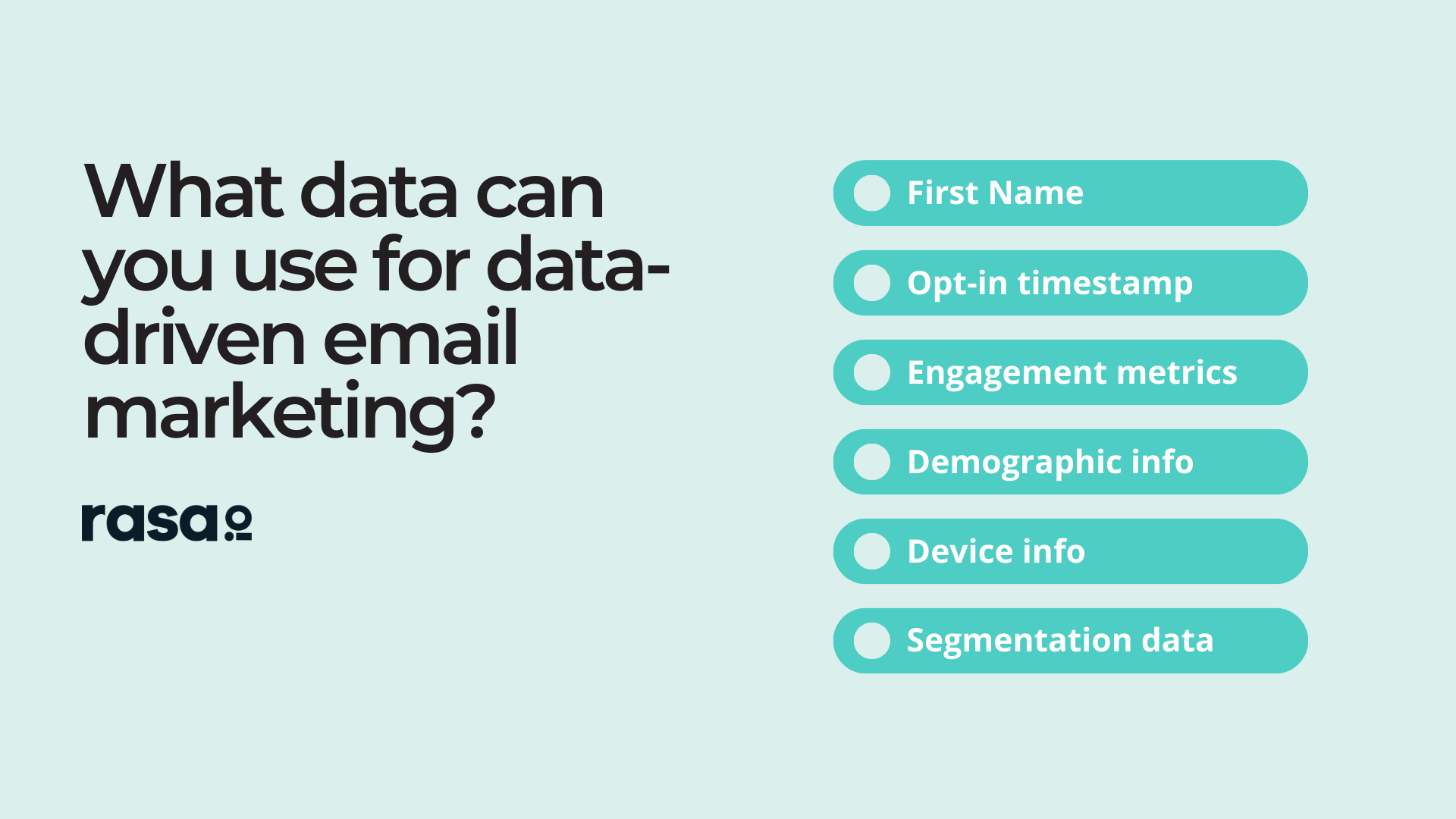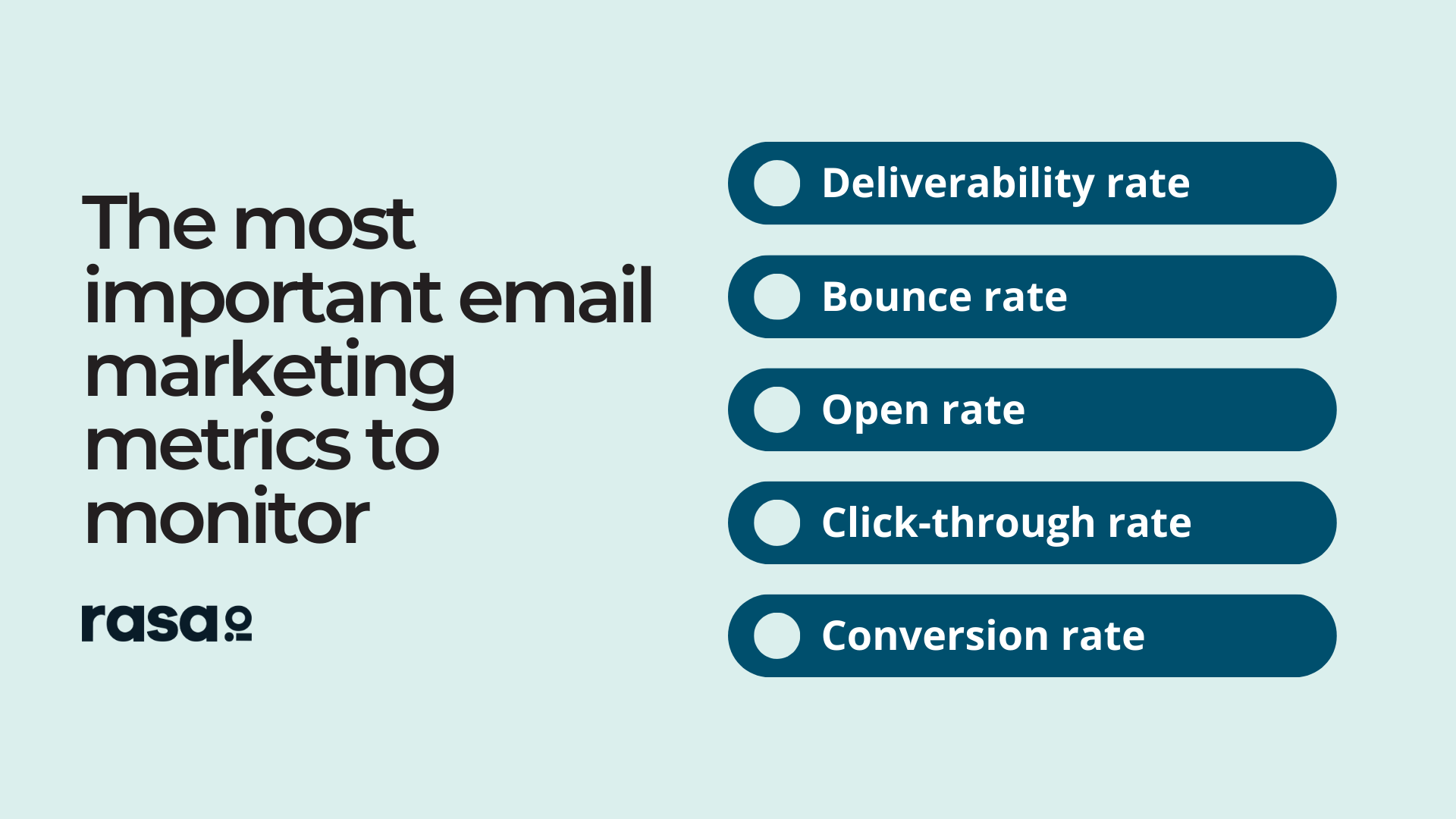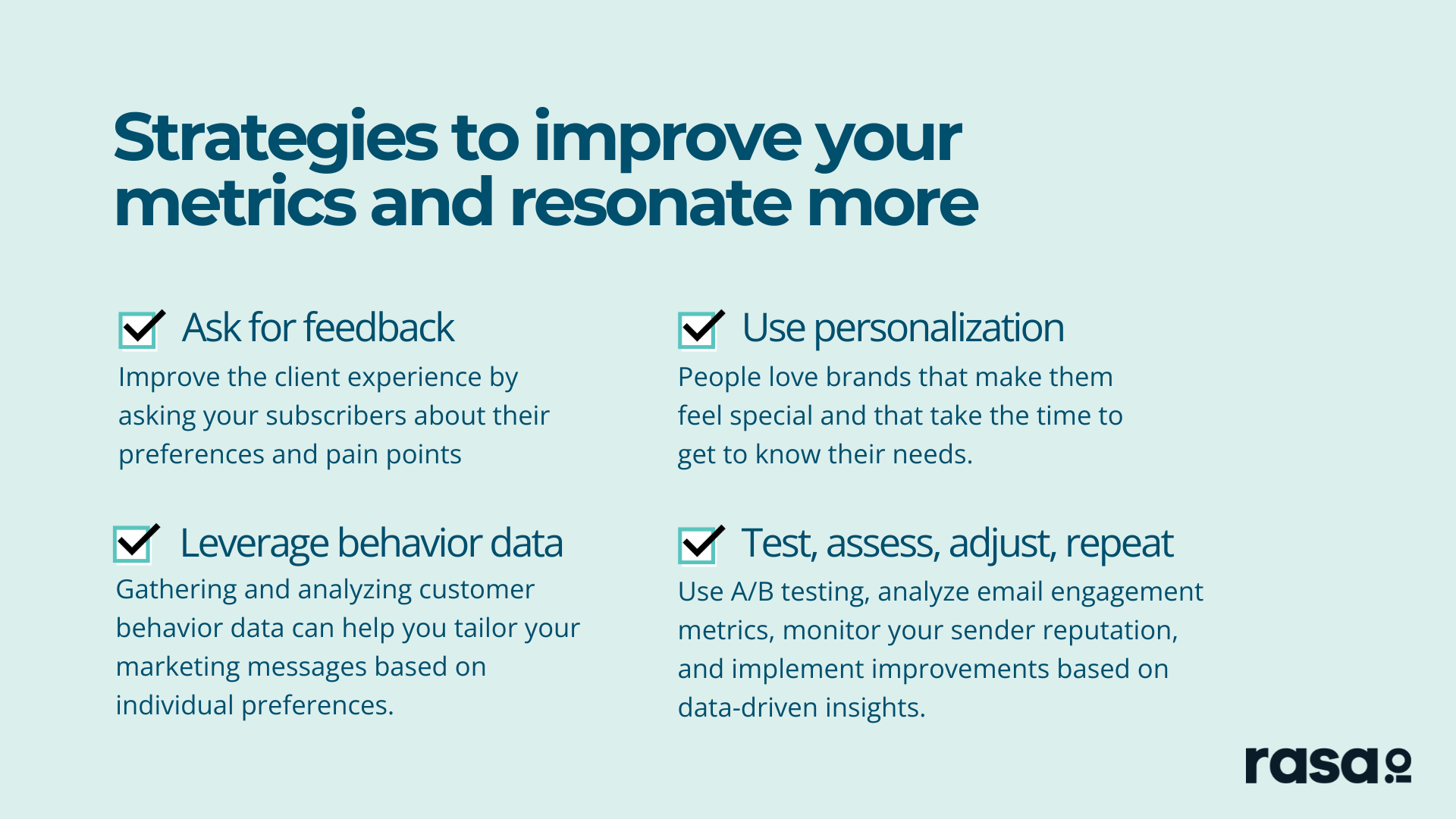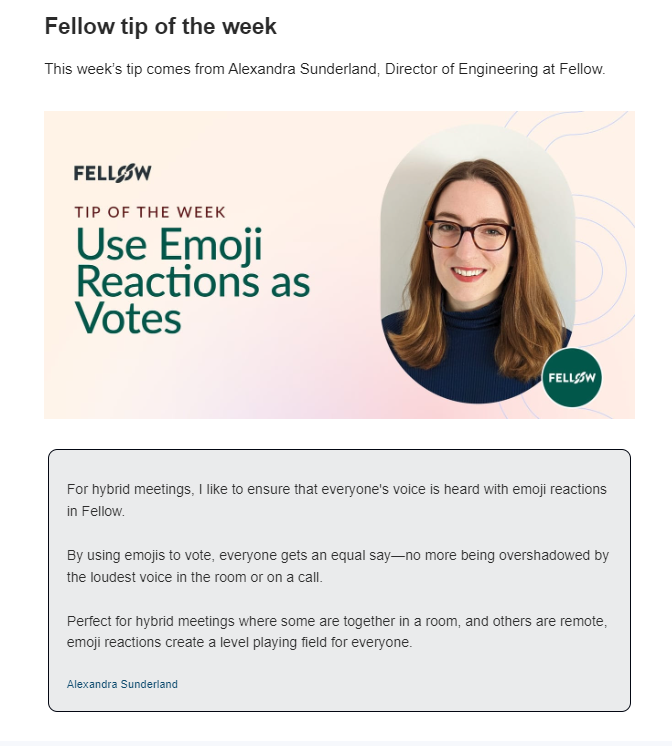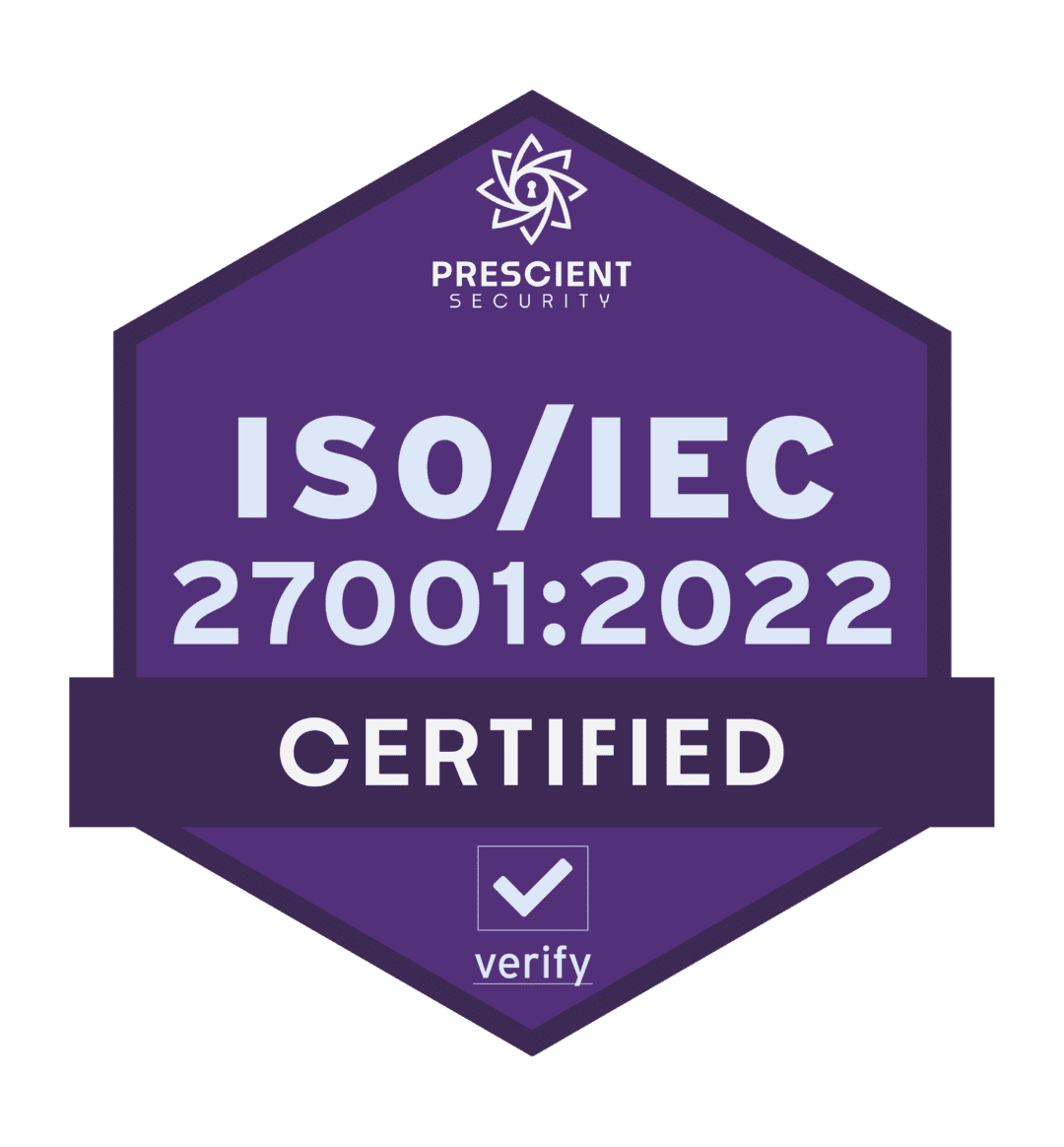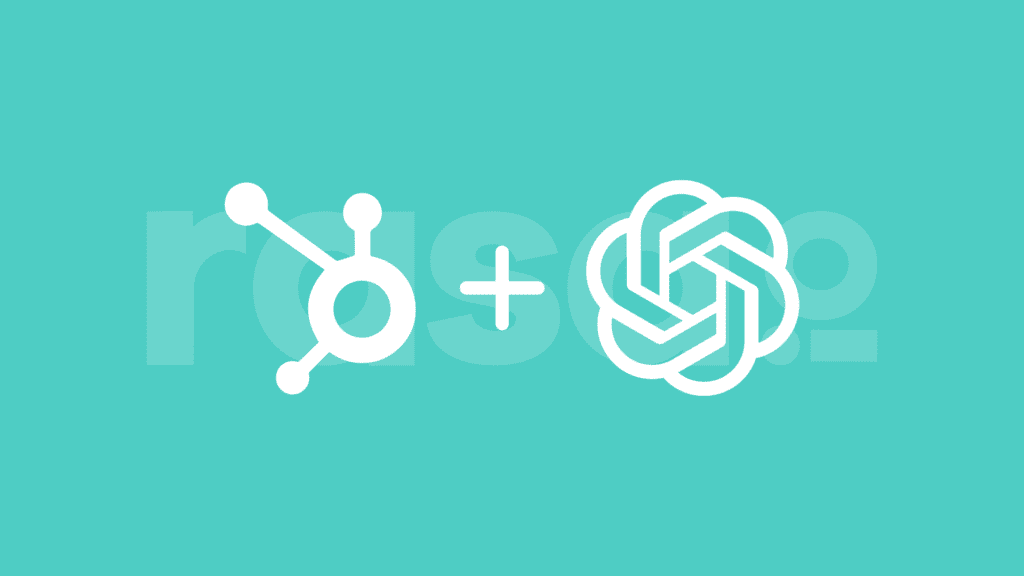Nearly 90% of brands agree that email marketing is key to business success.
It would be even more interesting to see how many of those brands personalize their promotional emails to resonate with the needs and preferences of their target audience.
It’s a known fact that customized emails can lead to a rise in earnings of up to 760%.
And there’s perhaps no better way to personalize emails than through the use of data or to be more specific, subscriber data.
When you know exactly what your email subscribers want, you can deliver an experience tailored just for them.
And when they see that you, as a brand, took the time to share things that matter to them, they’re more likely to engage with your email and convert.
What is data-driven email marketing?
Data-driven marketing involves using data you gather from subscribers to inform your email marketing strategy.
This data might include:
- First name
- Opt-in timestamp
- Engagement metrics (i.e., open rates, click-through rates, conversion rates)
- Demographic information (i.e., age, gender, location)
- Device information
- Segmentation data (i.e., purchase history, preferences)
Keeping track of this data can help you create targeted, personalized email campaigns and track their performance.
Data-driven email marketing is a continuous cycle that requires you to collect, analyze, and apply data throughout each stage of the email campaign creation process. This ensures you’re always optimizing the effectiveness of your email marketing efforts.
Here’s an example of an email by Grammarly that uses data to tailor content to each subscriber:

Why is it important to use a data-driven approach in email marketing?
The biggest advantage of taking a data-driven approach to email marketing is the ability to personalize communications with diverse customer segments.
A B2B software provider that offers project management tools is an example of a company using personalization in email marketing.
It tailors content based on user behavior, such as sending a follow-up email after a trial period ends. If a user heavily uses the task management feature, the email might offer tips on maximizing that tool, along with case studies from similar businesses that benefited from it.
The most important email marketing metrics to monitor
To make sure your marketing emails are always hitting the mark, always monitor the following metrics.
Deliverability rate
We’ve become so accustomed to emails that we take them for granted and assume that just because we send one, it will automatically reach a person’s inbox.
Unfortunately, this isn’t the case.
Sometimes, your emails could reach your subscribers’ spam folders instead.
There are a few factors that affect email deliverability:
- Sender reputation: The reputation of your domain and IP address can affect your email deliverability rate.
- Authentication protocols: Using the right authentication protocols, such as SPF, DKIM, and DMARC, helps verify the authenticity of emails and reduces the likelihood of them ending up in spam folders.
- Content quality: The subject lines, body text, images, and links included in your emails can affect their deliverability. Avoid spammy words and phrases, which often trigger spam filters.
- List hygiene: A clean and engaged email list means that your emails will likely reach your subscribers’ inboxes. Go through your email list regularly to get rid of inactive or invalid email addresses. Handle bounce-backs quickly and honor unsubscribe requests to maintain list hygiene.
- Volume and frequency: Email service providers (ESPs) track how many emails you send and how often you send those emails. Sudden spikes in sending activity can activate spam filters. So, gradually ramp up sending volumes and maintain consistent sending patterns.
- Complaint rates: High rates of spam complaints can harm your sender’s reputation and deliverability.
Open rate
So, you get your emails to reach your subscribers’ inboxes. Now, you need them to click on those emails. Use insights from open rates to tailor campaigns that resonate with your audience.
Here’s how you can leverage data to improve engagement:
- Analyze open rates to refine subject lines and preheader text. Craft messaging that resonates with your target audience.
- Track click rates to understand which offers or content types that drive action. Use this information to deliver high-value content that aligns with your audience’s preferences.
- Segment your audience based on user engagement. That way, you can send targeted campaigns that speak to their specific interests and needs.
- Personalize content with dynamic elements informed by user behavior to increase relevance and the chances of them interacting with your content.
- Optimize send times based on when your audience is most active to ensure your message lands when they’re most likely to be engaged.
Click-through rate
Your email click-through rate represents the percentage of recipients who clicked on one or more links within an email.
Here’s how you can use this data to improve your CTR:
- Evaluate which CTAs get the most clicks
- Spot trends in recipient behavior by analyzing CTRs across different segments.
- Use A/B testing results to learn what drives higher CTRs.
Conversion rate
Email conversion rates show you the percentage of recipients who take a desired action after clicking on a link in an email. It equals the number of conversions divided by the number of clicks. Then, you multiply that by 100% to get the percentage.
Possible actions include buying something, subscribing to a newsletter, downloading a resource, or filling out a form.
Knowing your conversion rates can help you determine the ROI and success of your email campaigns.
The key to increasing conversions is building trust and providing value. Here are some ways to do that:
- Tailor offers to the pain points of your audience.
- Optimize your landing pages.
- Personalize the experience.
- Provide social proof.
Strategies to improve your metrics and resonate more
Follow these tips to create more personalized emails that your subscribers can’t help but engage with.
Ask for feedback
One of the best ways to improve the customer experience is to ask your subscribers about their preferences and pain points.

Some ways to gather customer feedback include:
- Net Promoter Score (NPS) surveys
- Transactional surveys
- Social media polls
- Feedback forms
- Email surveys
Use this feedback to improve your products and services, understand the customer journey, and inform your email marketing efforts.
If your audience shows interest in learning how to become more productive during meetings, create emails with information about tools like staff meeting agendas or tips on improving interactions.
Leverage customer behavior data and sentiment analysis tools
Gathering and analyzing customer behavior data can help you tailor your marketing messages and offers to individual preferences and segment subscribers into different groups.
Gathering customer behavior data includes website visits, purchases, email opens, clicks, and social media interactions.
A customer relationship management (CRM) tool can help you track this data. Most CRMs can now seamlessly integrated with email marketing software via APIs to help you visualize this data in one dashboard.
However, it’s highly recommended to use an API management platform to effectively manage these APIs and ensure secure, scalable, and efficient data integration. This adds an extra layer of security to the data flowing between the connected platforms.
You can also use customer data platforms to create highly targeted and impactful email campaigns by going beyond basic demographics. CDPs can unlock tons of insights by integrating with customer behavior data and sentiment analysis tools.
Use personalization
People love brands that make them feel special and that take the time to get to know their needs.
In fact, 90% of consumers get annoyed when they receive messages that aren’t personally relevant to them.
So, when you send emails that resonate with subscribers, they’re more likely to engage with them. This means higher open rates, CTRs, and conversions.
To personalize your emails:
- Use recipients’ first names in your subject lines.
- Segment your email list based on factors like purchase history, demographics, engagement level, or preferences.
- Recommend products or content based on a recipient’s past purchases, browsing behavior, or preferences,
- Set up automated email workflows triggered by specific recipient actions or behaviors, such as abandoned cart emails, welcome emails for new subscribers, or re-engagement campaigns for inactive subscribers.
- Send birthday or anniversary emails.
- Use geotargeting to customize email content based on the recipient’s location or time zone.
You can also use an email automation platform like rasa.io. Our solution helps you personalize the experience by offering each contact on your list unique content that meets their individual needs and preferences.
Personalize Your Email Newsletter At A 1-1 Scale.
Save time personalizing with rasa.io’s newsletter tool that creates a uniquely curated email for each individual.
Create interactive content
Incorporating interactive content into your emails can be a fun way to engage your subscribers and increase their chances of taking action.
Examples of interactive content include:
- Interactive elements like images, GIFs, page breaks, and visuals
- Embedded videos
- Clickable buttons
- Picture carousels
People love GIFs. They’re perfect for expressing anyone’s feelings through email. Magic Hour knows this and has carefully selected a GIF that perfectly expresses the reaction anyone will have when trying butterfly pea tea for the first time.
So, it’s not just an email promoting their tea but also a promise of how customers will feel when they drink it.

When you add interactive content, it could also be a great time to incorporate heatmaps to show how subscribers interact with your content. You can use heatmaps to:
- Optimize email layout and design
- Identify content preferences
- Understand click patterns
Test, assess, adjust, repeat
Use A/B testing, analyze email engagement metrics, monitor your sender reputation, and implement improvements based on data-driven insights.
Doing so will help you continuously optimize email design, content, subject lines, CTAs, and send times to maximize engagement and results.
Get started now
A good email marketing strategy uses data to understand the type of content subscribers are most likely to engage with.
Data is powerful because you can gather it directly from the people you want to appeal to the most — your customers.
Need help getting started? Book a demo with rasa.io today and see how to get more out of your email list.
Shane Barker is a digital marketing consultant, Amazon expert, and E-commerce strategist. He is the founder of Tracefuse and the CEO of Shane Barker Consulting Agency. He has consulted with Fortune 500 companies, influencers with digital products, and a number of A-list celebrities.


